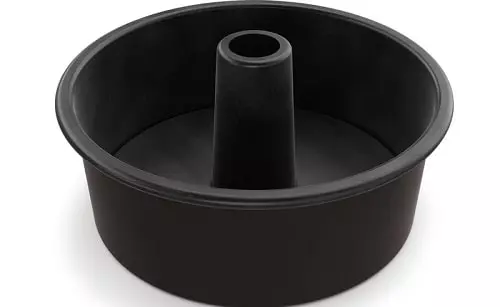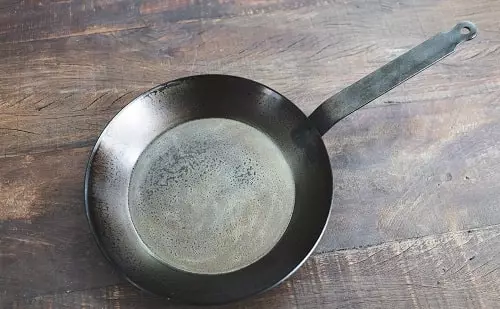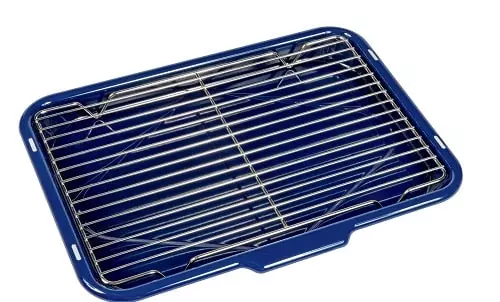While baking certain tools and equipment are indispensable for creating a wide range of delicious treats. One such essential tool is the tube pan, a versatile piece of bakeware known for its unique design and ability to produce exquisite cakes. In this comprehensive guide, we will explore the world of tube pans, providing insights into their definition, types, features, uses, and the numerous benefits they offer to bakers and dessert enthusiasts.
Understanding Tube Pans:

A tube pan, sometimes referred to as a tube cake pan or angel food cake pan, is a specialized baking pan designed for making cakes. It distinguishes itself by its distinctive shape, featuring a round base with tall, straight sides and a central tube or “chimney” that runs through the middle of the pan. The tube, often removable, serves a crucial purpose in the baking process by allowing for even heat distribution to the center of the cake, resulting in a uniform and perfectly risen dessert.
Types of Tube Pans:
- Traditional Metal Tube Pans: These tube pans are typically crafted from aluminum or steel. They are known for their durability, heat-conducting properties, and ability to create a well-browned crust on cakes. Many traditional metal tube pans also come with a non-stick coating to facilitate easy cake removal.
- Non-Stick Tube Pans: Non-stick tube pans can be made from various materials, including metal or silicone. They feature a non-stick coating that further simplifies the process of removing the cake from the pan. These pans are ideal for those who want fuss-free cake release and minimal cleanup.
- Silicone Tube Pans: Silicone tube pans are flexible, making it effortless to remove cakes without the need for excessive greasing. They are also non-stick and heat-resistant, offering convenience and versatility in baking.
Key Features of Tube Pans:
- Central Tube: The most defining feature of a tube pan is its central tube, which promotes even heat distribution to the cake’s core. This results in cakes with a uniform texture and a consistent rise.
- Tall, Straight Sides: Tube pans have tall, straight sides that provide structural support to cakes as they bake. This design is particularly important for delicate cake types like angel food cakes.
- Removable Bottom: Some tube pans feature a removable bottom, which simplifies the process of taking the cake out of the pan without damaging its delicate structure.
- Non-Stick Surface: Many tube pans, regardless of their material, come with a non-stick surface to ensure easy cake release and straightforward cleaning.
Uses of Tube Pans:
- Baking Angel Food Cakes: Tube pans are primarily used for baking angel food cakes, chiffon cakes, and sponge cakes. The central tube ensures even baking, resulting in a cake with a light, airy crumb.
- Baking Other Cakes: While tube pans are best known for angel food cakes, they can also be used to bake pound cakes, bundt cakes, and other dense, moist cakes that benefit from even baking.
Benefits of Using a Tube Pan:
- Uniform Baking: The central tube in a tube pan facilitates even heat distribution, ensuring that the cake bakes uniformly from the inside out.
- Structural Support: Tall, straight sides provide crucial support to cakes, allowing them to maintain their shape and rise properly during baking.
- Non-Stick Surface: Many tube pans come with a non-stick coating, making it easy to release the cake without it sticking to the pan.
- Easy Removal: Some tube pans have removable bottoms or are made of flexible silicone, simplifying the process of removing the cake while preserving its delicate structure.
- Versatility: While primarily used for specific cake types, tube pans can also be employed for baking a variety of other cakes, offering versatility in the kitchen.
Tips for Using a Tube Pan:
- Grease and Flour: Even if your tube pan has a non-stick coating, it’s a good practice to grease and flour the pan to ensure easy cake release.
- Invert for Cooling: After baking, many tube cake recipes recommend inverting the pan and cooling it upside down. This prevents the cake from collapsing as it cools.
- Use a Cooling Rack: To cool your cake, place it on a wire cooling rack after inverting the pan. This allows for proper airflow and prevents moisture from accumulating.
- Remove the Cake Carefully: When removing the cake from the pan, use a thin knife or spatula to gently release it from the sides and central tube. Be patient to avoid damaging the cake.
In Conclusion:
A tube pan is an essential tool for any baker, especially when it comes to creating delicate and beautifully risen cakes like angel food cake. Whether you choose a traditional metal pan with a non-stick coating, a flexible silicone version, or one with a removable bottom, the tube pan’s design ensures even baking and successful cake release. With its ability to produce exquisite cakes with uniform textures, a tube pan is a valuable addition to any baker’s collection of kitchen equipment. So, whether you’re an experienced baker or just starting your baking journey, consider adding a tube pan to your arsenal and explore the world of delightful, perfectly baked cakes that it can help you create.

